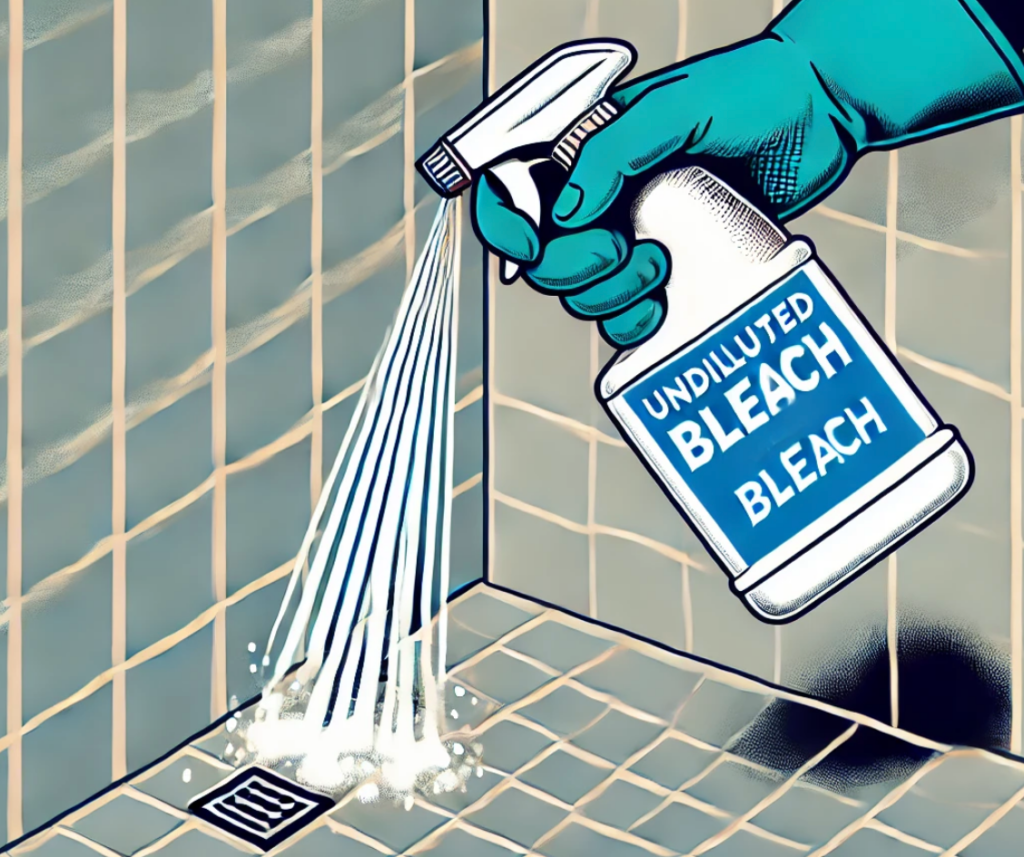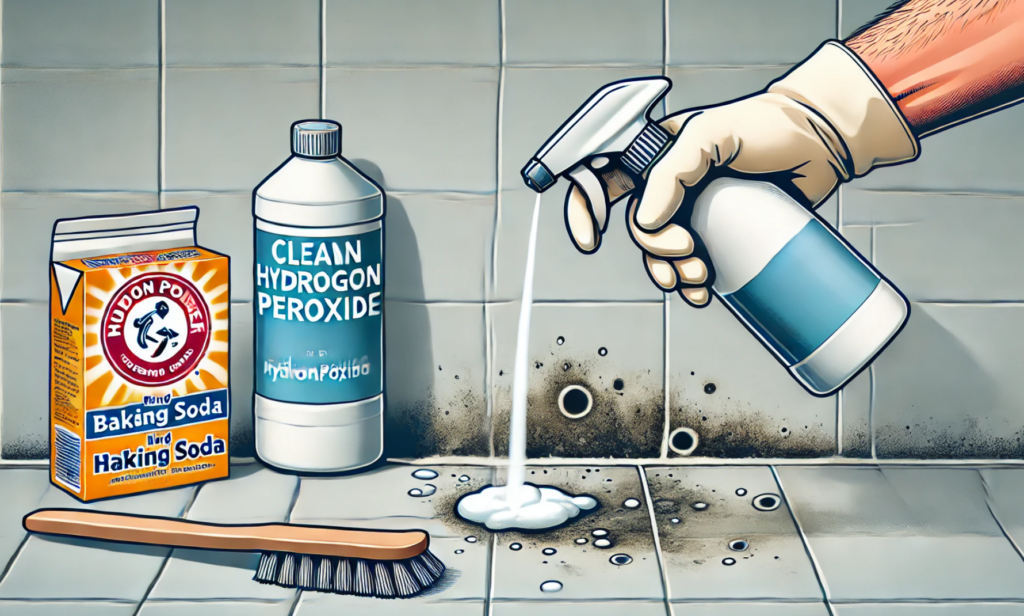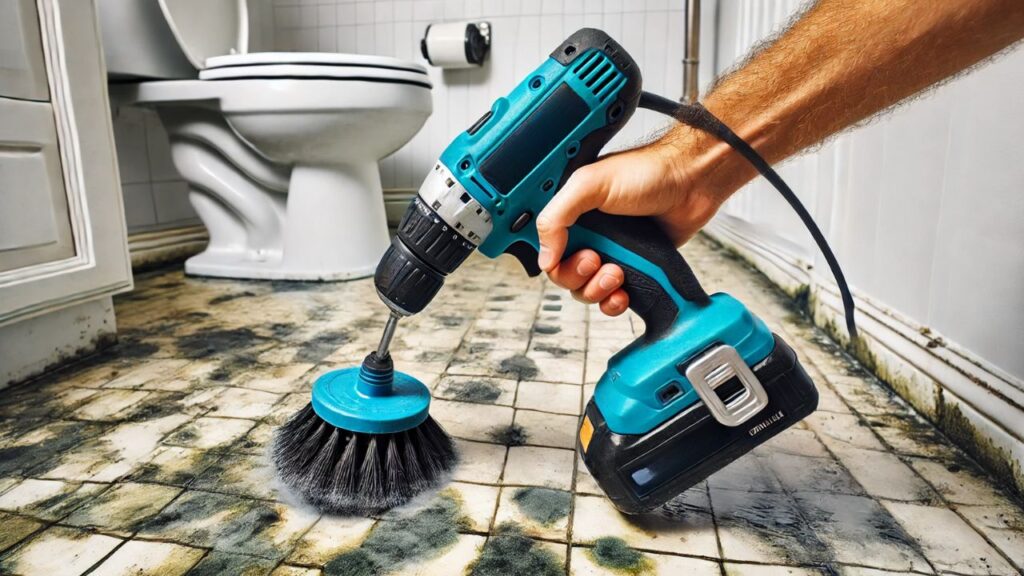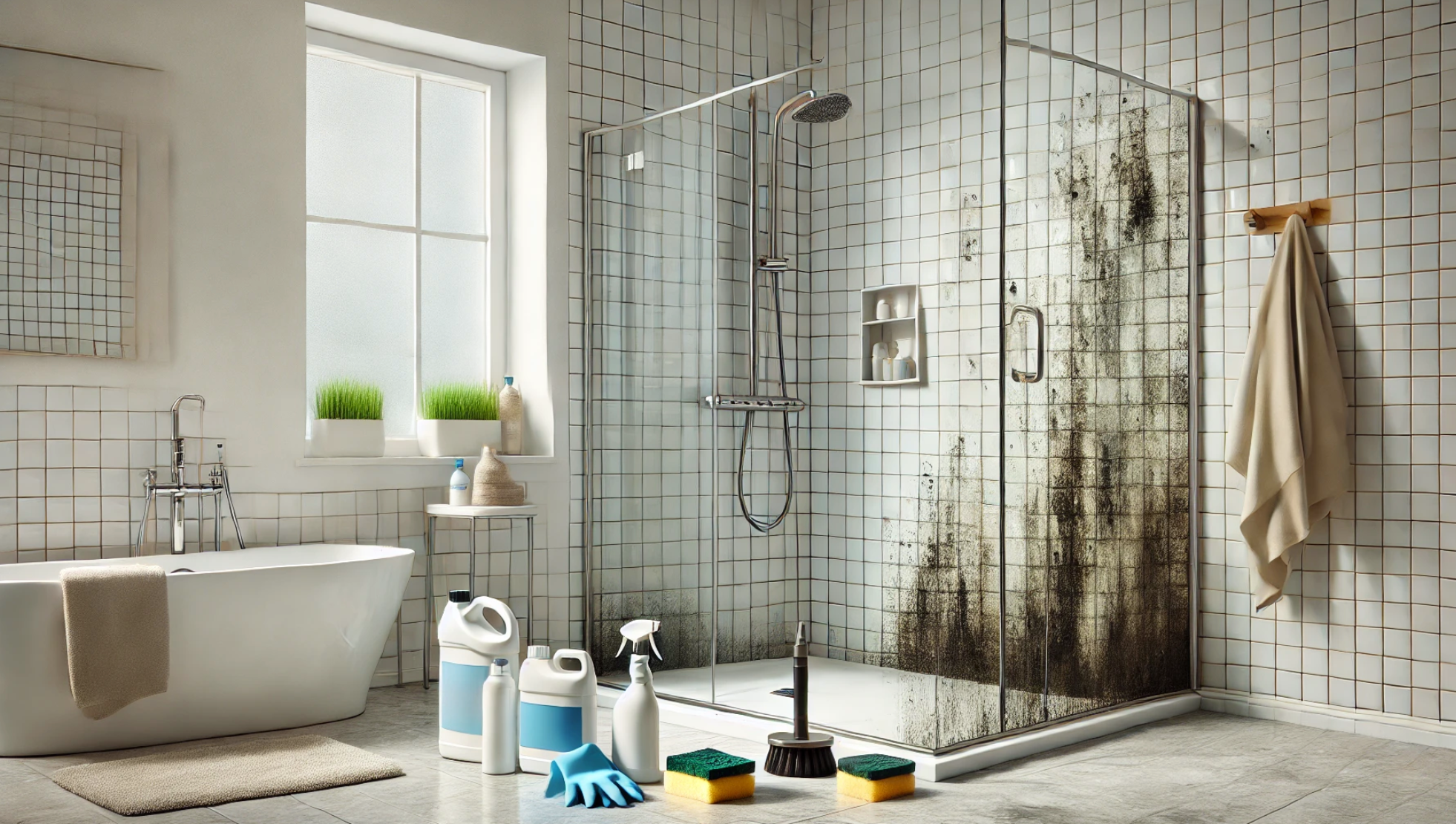Removing Mold From Shower Title Grout
TL;DR: To effectively clean mold in shower tile grout, employ a proven cleaning solution such as hydrogen peroxide mixed with baking soda or specialized products like HG Mould Spray, Concrobium, or Dettol Mould and Mildew Cleaner. These potent cleaners, when applied and left to sit for several minutes, allow for easier scrubbing with a stiff brush. For stubborn infestations, a diluted bleach solution (1:10 ratio with water) or robust commercial cleaners like Tilex or X-14 Mildew Stain Remover can be utilized, ensuring proper ventilation during application. After thorough rinsing and drying, implement preventive measures: operate an exhaust fan for 60 minutes post-shower, use a squeegee on tiles, and maintain slight shower door openings. For long-term protection, consider regrouting using epoxy-based materials or applying 100% silicone caulk in corner joints. Regular maintenance, including daily vinegar spray applications or weekly mild detergent cleanings, significantly reduces mold recurrence.
Mold growth in shower tile grout is a common issue for many homeowners. The damp, warm environment of bathrooms creates ideal conditions for mold to thrive, often appearing as black spots on tile surfaces. This problem can turn a clean bathroom into an unsightly space.
However, there are effective ways to address mold in shower grout, regardless of its color or type. The process involves identifying the type of mold, selecting appropriate cleaning methods, and implementing preventive measures. With the right approach, you can eliminate existing mold and reduce the likelihood of future growth. This will help preserve the cleanliness and integrity of your shower area.
Is Mold In Shower Grout Dangerous?
Mold in shower grout is generally not considered highly dangerous for most healthy individuals, but it can pose potential health risks and should be addressed. Mold growth in showers is common due to warm, moist conditions with soap residue, body oil, and skin cells. It typically presents as a cosmetic issue that can be managed through regular cleaning and maintenance.
However, mold exposure may cause minor effects like a stuffy nose or coughing, especially for individuals with asthma or mold allergies. In rare cases, it can lead to opportunistic infections, particularly for those with compromised immune systems or underlying health conditions.
The color of mold, including black mold, does not determine its toxicity, and all visible mold should be removed from buildings and homes regardless of color.
Regular cleaning with appropriate products like chlorine bleach, vinegar, hydrogen peroxide, or specialized mold removers can help control mold growth.
If mold persists despite repeated cleaning, it may indicate a more serious issue such as water penetration behind the tiles, degraded caulk, or a leak in the shower structure. In such cases, professional inspection and remediation may be necessary.
Can Black Mold Grow In Tile Grout?
Black mold can indeed grow in tile grout, as grout is susceptible to mold growth due to its porous nature and exposure to moisture in bathrooms and showers. Mold spores are ubiquitous and can thrive in moist environments, making bathrooms particularly vulnerable.
Mold in grout often appears as streaks of black discoloration and can be difficult to remove. It may indicate underlying moisture problems, potentially even behind the tiles. Grout mold can be a recurring issue, persisting even after regrouting if the root causes are not addressed.
Epoxy grout or grout mixed with acrylic additives can enhance mold resistance and reduce water migration. Larger tiles with fewer grout joints can also minimize mold-prone areas.
Bleach is often considered ineffective for killing black mold in grout. Professional-grade biocides diluted with water may be more effective. In severe cases or when mold growth is extensive, professional assistance may be necessary.
Can Grout Be Mold Resistant?
Yes, a grout can be mold resistant. The cement-based grout is naturally mold resistant because mold and mildew cannot live or grow on cement. This common misperception arises due to contaminants such as soap, cleaning fluids, oil, and food left on the grout surface, which can feed mold and mildew, allowing them to grow. Once these sources of food are removed, the mold and mildew should not return.
How To Remove Mold From Shower Grout?
You can effectively remove mold from shower grout using bleach, hydrogen peroxide, commercial cleaners, and natural alternatives. Regular maintenance, proper ventilation, and addressing underlying issues are important for long-term prevention.
Here are steps our mold remediation team follows to clean mold in shower grout:
Step 1: Gather Necessary Tools And Materials
Before starting the mold removal process, we gather all necessary tools and materials. This includes:
- Different cleaning solutions like bleach, hydrogen peroxide, baking soda and vinegar
- Spray bottle
- Paper towels
- Scrub brushes (toothbrush or grout brush)
- Drill brush attachment
- Steam cleaner
- Mold-resistant silicone caulk, and grout sealer
- protective gear such as gloves, masks, and safety goggles.
Step 2: Apply Bleach Solutions
Bleach is a commonly recommended mold-killing agent. We Apply undiluted bleach directly onto the grout using a spray bottle or soaked paper towels. Let it sit for at least 24 hours before rinsing thoroughly.

Alternatively, mix baking soda with bleach to form a paste, apply it to the moldy grout, let it sit for a few hours, then scrub and rinse. Note that bleach can cause discoloration and health risks, so ensure proper ventilation.
Step 3: Use Hydrogen Peroxide
Hydrogen peroxide is a safer alternative to bleach. We spray hydrogen peroxide directly onto the moldy grout and let it sit for 10 minutes, then scrub with a brush and rinse. For a stronger solution, we suggest mixing hydrogen peroxide with baking soda to form a paste, apply it to the grout, let it sit for a few hours, then scrub and rinse.

Step 4: Utilize Commercial Mold Cleaners
We also have several commercial products specifically designed for mold removal. We recommend Mold Armor Mold and Mildew Killer, Clorox Mold and Mildew Remover, Concrobium, Exit Mould, or Swedish- mögel bort as per the instructions on the product. These products are effective in killing mold and preventing its return.
Step 5: Apply Natural Alternatives
For those who prefer natural cleaning methods for mold removal from shower grout, we recommend mixing vinegar and baking soda to form a paste. Apply it to the grout, let it sit, then scrub and rinse. Another option is to mix tea tree oil with water and spray it onto the mold, let it sit for a few hours, then scrub and rinse.
Step 6: Scrub With Proper Tools
A toothbrush or grout brush is ideal for scrubbing grout lines. For larger areas, attach a scrub brush to a drill for more efficient cleaning. A steam cleaner is also effective for deep cleaning but may require caution to avoid damaging tiles.

Step 7: Recaulk The Shower
Sometimes, cleaning alone isn’t enough. Remove old caulk, clean the area, and apply mold-resistant silicone caulk, especially where tiles meet the tub or walls. Applying caulk while the tub is full of water maximizes the gap for a better seal.
Step 8: Regrout The Tiles
If mold persists, remove old grout and apply new grout. Consider using epoxy grout, which is more resistant to mold and mildew.
Step 9: Take Preventative Measures
Here are the preventive measures you should take after cleaning mold in shower grout:
- Ensure Proper Ventilation: Proper ventilation is key to preventing mold growth. Install and use an exhaust fan during and after showers to reduce humidity. Allow natural light to enter the bathroom to inhibit mold growth.
- Maintain Regular Cleaning: Consistent cleaning and maintenance can prevent mold. Clean the shower and grout with a bleach or hydrogen peroxide solution every few weeks. After cleaning, apply a grout sealer to prevent moisture penetration and make future cleaning easier.
- Address Underlying Issues: Ensure there are no leaks or water damage behind tiles. Check and maintain waterproof barriers like Kerdi membranes behind tiles and use Red Gard to prevent water damage. Fix any leaks or cracks in grout promptly to prevent mold from taking hold.
How Can The Use Of Strong Cleaners Affect Shower Tile Grout Over Time?
Strong cleaners can harm shower tile grout over time. Using harsh products like bleach or vinegar often can wear down the protective sealers on grout. This leaves the grout open to damage from soap, oils, and dirt.
Grout contains cement and is alkaline. When its sealers are gone, acidic cleaners like vinegar can eat away at it. This weakens the grout’s structure. More soap and dirt then get into the grout, feeding bacteria that cause mold and mildew.
Each shower makes things worse once the grout or sealer is damaged. It pushes more dirt into the grout, helping bacteria grow. People often use more bleach to fight visible mold, but this just hurts the grout more.
To avoid these problems, use neutral or mildly alkaline cleaners made for grout and tile. If you use strong cleaners, let the area dry well. Then put on a good sealer within 24 hours to protect the grout. Reseal grout yearly and use soft scrubbers to keep it in good shape.
Why Is Bleach Not Always The Best Solution For Cleaning Mold From Shower Tile Grout?
Beach is an effective high pH cleaner that kills mold and mildew organisms on contact, its frequent application can break down the sealers that protect the grout. These sealers are crucial in preventing soap scum, oils, and dirt from penetrating into the grout. Once the sealer is compromised, the grout becomes more susceptible to further damage and staining.
Ready For A Mold-Free Bathroom?
While these DIY methods can help tackle mold in shower grout, sometimes a professional touch is necessary to ensure your bathroom remains mold-free and safe. At Mold Removal Memphis, our expert team is equipped to handle even the most stubborn mold infestations. Don’t let mold jeopardize your home’s hygiene and your family’s health. Contact us today at (901) 250-0431 for a comprehensive mold removal service and reclaim your clean, mold-free bathroom.

